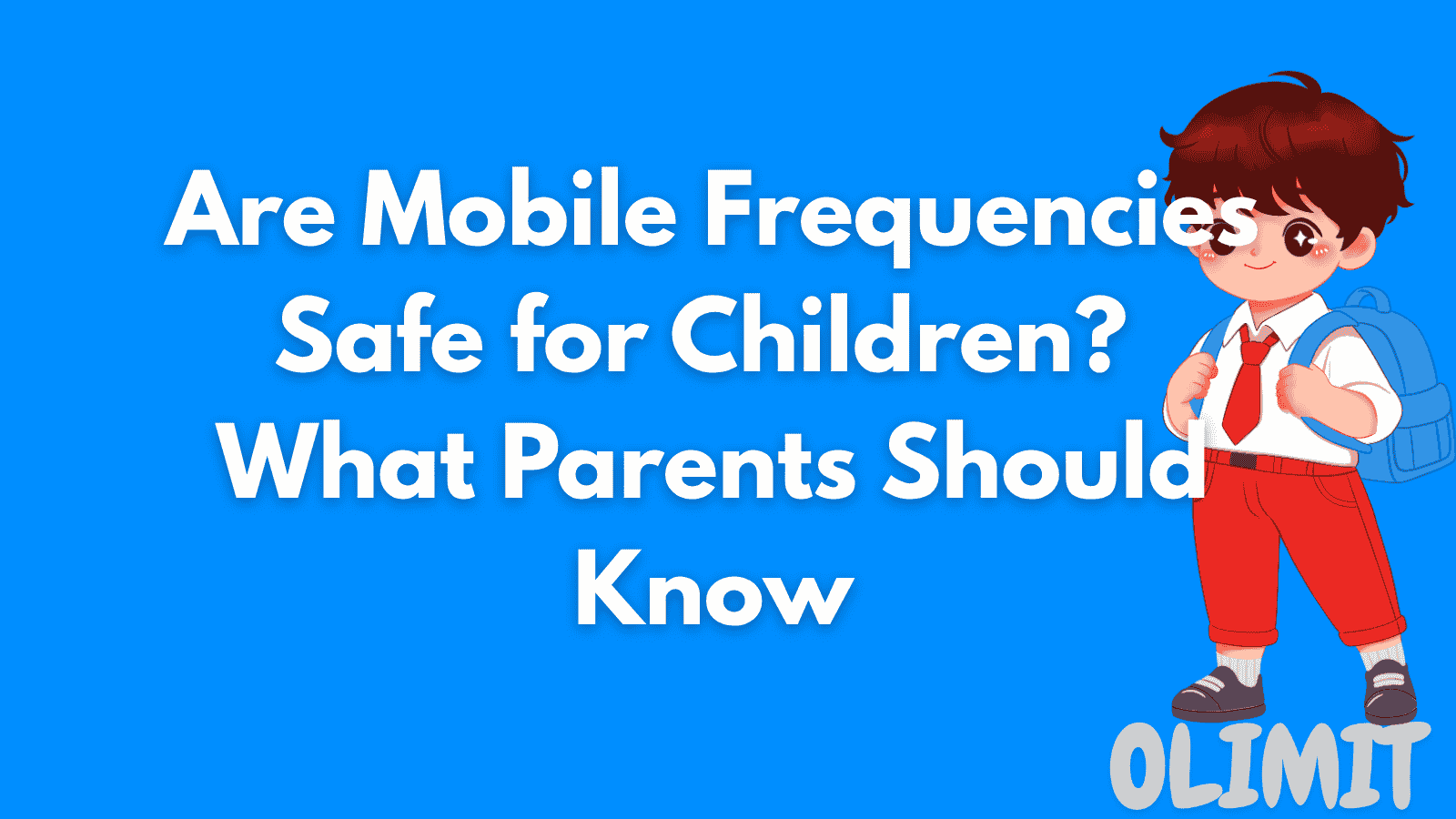Mobile phones and wireless internet have become part of everyday life. From tablets in the classroom to phones in their pockets, children are growing up constantly surrounded by technology — and the invisible signals that power it. As a parent, it’s only natural to ask: are mobile frequencies safe for kids?
Let’s explore the science, the concerns, and what parents can do to stay informed without falling into fear.
What Are Mobile Frequencies?
Mobile networks — like 3G, 4G, and now 5G — use radiofrequency (RF) waves to send and receive signals. These are a type of non-ionising radiation, meaning they don’t carry enough energy to break apart DNA or directly damage cells. Other types of non-ionising radiation include:
- Wi-Fi
- Bluetooth
- FM/AM radio
- TV signals
Mobile devices and masts use different frequency ranges, usually from 800 MHz (for 4G) to as high as 26 GHz (for certain 5G bands).
Why Do Some Parents Worry?
Many parents are uncomfortable with the idea of:
- Mobile phone towers near schools
- 5G masts appearing overnight in residential areas
- Phones constantly being close to children’s heads or bodies
- Wi-Fi routers being left on all day and night
The main concern is that children’s bodies are still developing. Their brains are more active, their skulls are thinner, and they may absorb more energy per unit of body weight than adults.
Combine that with how much earlier children are getting their first devices, and it’s no wonder people want clear answers.
What Does Research Say About Safety?
So far, most research has not shown consistent evidence that everyday exposure to RF waves causes harm. That said, scientists are still studying long-term impacts — especially as newer technologies (like high-band 5G) are introduced.
Key things to understand:
- Mobile phones emit more radiation than masts — especially during calls or when the signal is weak
- Distance matters — the farther a child is from a source (like a router or tower), the less exposure they receive
- Duration matters too — longer use of devices close to the body can lead to higher exposure over time
No strong evidence has shown that low-level RF exposure causes issues like cancer, but there are still questions about effects on sleep, attention, or memory in children. Some smaller studies have found changes in brain activity, but these are still being explored and are often inconsistent.
What About 5G?
5G brought a new layer of worry. It uses higher frequency bands (like 3.5 GHz and up to 26 GHz) that some believe could be more harmful.
But here’s what’s important:
- Higher-frequency waves don’t travel as far, so 5G requires more antennas, often placed on streetlamps or rooftops
- These waves don’t penetrate deeply into the body, usually staying at skin level
- Exposure levels from 5G antennas remain far below established safety guidelines — even when you’re near a mast
Also, most of the exposure children receive comes from their own device, not the nearest 5G pole. For example, a phone downloading videos or gaming will expose them to far more RF than walking past a tower.
Is Living Near a Mast Risky?
Many parents worry about living near a mobile phone tower or a mast near a school.
Here are a few facts:
- The power output from mobile masts is very low compared to handheld devices
- Radiation levels fall sharply just a few metres from the source
- Regular safety testing is required before any mast is activated
Even if a mast is right outside your child’s school or home, exposure levels are typically hundreds of times lower than what your phone gives off when it’s in your hand.
What You Can Do (If You Still Feel Unsure)
There’s no need to panic — but if you’d rather play it safe, here are simple steps that don’t involve tinfoil hats:
📴 Encourage Breaks from Screens
Set limits for mobile and tablet use — this is helpful for mental health too, not just radiation concerns.
💻 Use Ethernet Instead of Wi-Fi
If you’re at home and not moving around, a wired internet connection removes wireless exposure completely.
🎧 Don’t Keep Devices Directly on the Body
Avoid phones in pockets for long periods. Use speakerphone or wired headphones for calls.
🌙 Turn Off Wi-Fi at Night
While not essential, switching off routers overnight gives the household a break from constant exposure — and may improve sleep.
📱 Choose Devices Wisely
Some phones emit less radiation than others. SAR (Specific Absorption Rate) values are listed by manufacturers.
What About Schools?
More schools are using tablets, smartboards, and wireless networks. If you’re concerned, ask the school:
- Where their Wi-Fi routers are placed
- Whether they turn networks off when not in use
- If mobile masts are nearby and what testing has been done
Most schools follow building and network guidelines, but it’s reasonable to ask questions and advocate for caution — especially in early years or nursery environments.
Should You Be Worried?
It’s easy to feel overwhelmed with the noise online — especially with videos and posts claiming that 5G or mobile signals are secretly harming us.
But based on the available evidence in 2025, there’s no proven link between normal RF exposure and serious health issues in children. That doesn’t mean all concerns are nonsense — but rather that moderation, not fear, is the best approach.
Keep devices at a distance when not in use, encourage downtime, and stay aware of new research. Technology isn’t going away — but how we use it is still within our control.
Final Thoughts
Mobile frequencies are part of the modern world. For most children, their biggest risks still come from excessive screen time, poor sleep, and a lack of real-world play — not from radiation.
So instead of stressing about signals in the air, focus on balance. Use tech wisely, stay curious, and don’t be afraid to ask questions. You don’t need to fear the invisible — just manage it with common sense.




